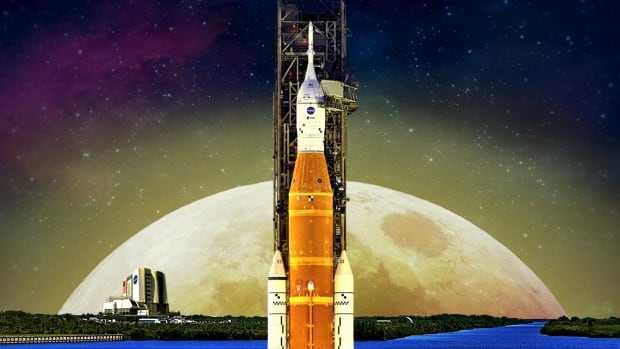
Humans are heading back to the moon — and Canada is playing a bigger role than you may realize
CBC
If all goes as planned, NASA's most powerful rocket yet will roar to life on the morning of Aug. 29, as part of the Artemis I mission to the moon.
While the mission will be uncrewed — the only passengers on the towering, 32-storey Space Launch System (SLS) and attached Orion capsule are three mannequins — it is the first moonshot for a human-rated spacecraft since Apollo 17 in December 1972.
The goal of the Artemis program is to send humans back to the moon — and ultimately to Mars.
But unlike the Apollo program of the 1960s, Artemis is an international effort. And Canada has no small role in returning humans to deep space; we are building a new Canadarm, a lunar rover and sending astronauts.
Our country's role is bigger and better than it ever has been in our quiet, but storied, past with space exploration.
Canada was the third country to have a satellite in space. We have sent astronauts to live and work in space. We have provided crucial instruments to Martian rovers, and tools on a spacecraft that charted a distant asteroid. We are partners in the newly launched James Webb Space Telescope, providing the instrument that keeps it guided.
And, of course, we built the iconic robotic arms — Canadarm and Canadarm2 — that have been used on space shuttles and the International Space Station, as commemorated on our $5 bill.
And we, too, are going to the moon.
The mission of Artemis I is to test the SLS rocket and the Orion capsule. But after that comes Artemis II, scheduled for 2024 or 2025, when four astronauts will travel in Orion and orbit the moon.
On that capsule will be a yet-unnamed Canadian astronaut — the first to travel to deep space.
NASA also has plans to build the Lunar Gateway, a small space station that will orbit the moon. Canada is contributing the Canadarm3, built by MDA, to that project — and the new arm is much more sophisticated than the originals.
"Canadarm2 today is on the International Space Station. It's about 400 kilometres away from Earth, so a few hours' drive, if you're going straight up," said Holly Johnson, vice-president of space and robotic operations at MDA. "Canadarm3 is going to be orbiting the moon at Lunar Gateway, which is 400,000 kilometres from Earth."
With that extended travel, she said, the CSA is focused on "evolving" the intelligence and the artificial intelligence of the Canadarm.
"It needs to be more autonomous, it needs to be smarter, because communication takes longer to go between Earth and the moon."













